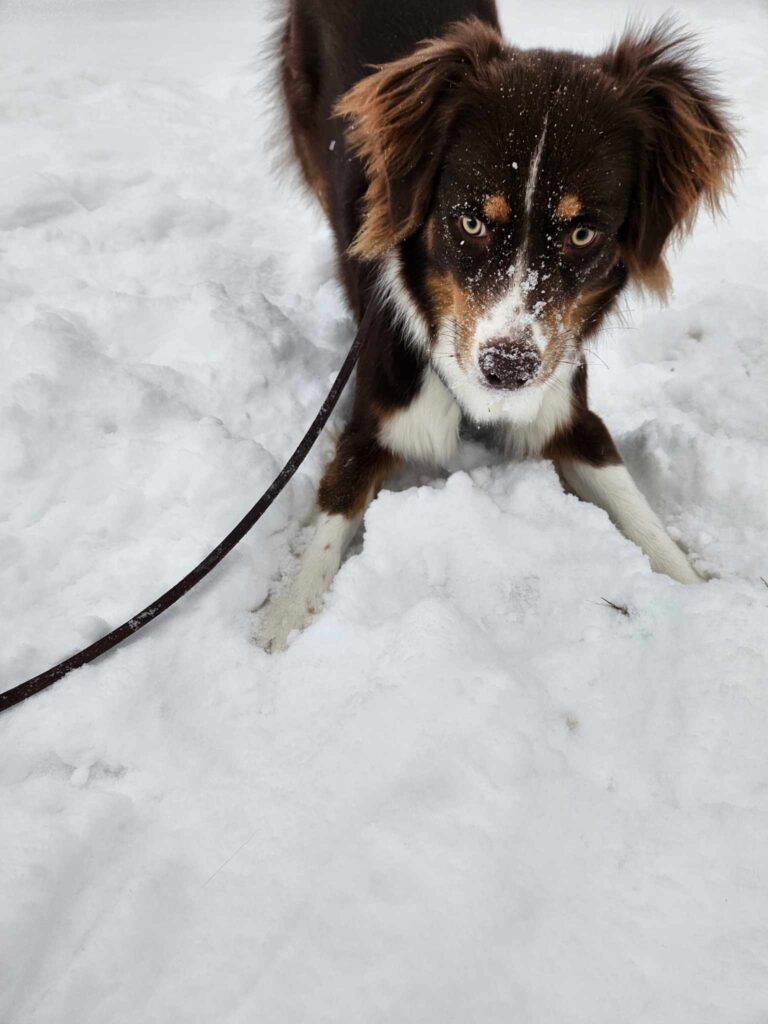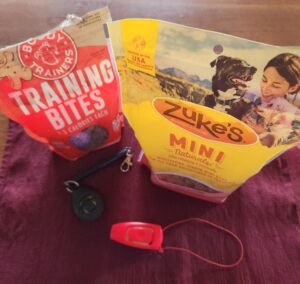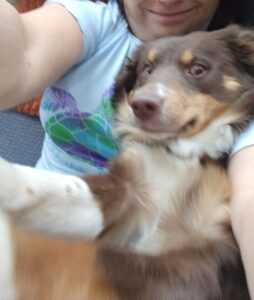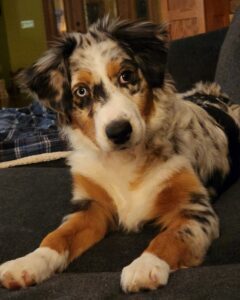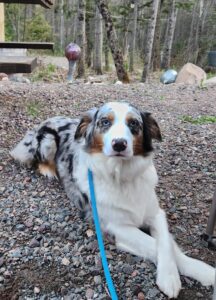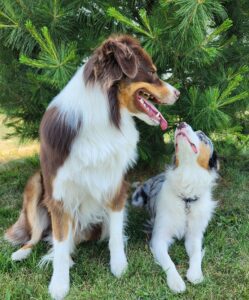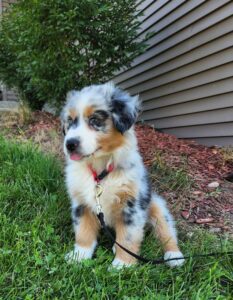Empower Not Enable
What is the difference?
| Behavior of Puppy | What We Can Do |
| Bossy – Gets wound up easily, lack self-control, quickly learn to climb gates, and take whatever/whenever they want. Could bark as a means to boss you around! | These pups can be a challenge. When bossy puppies get too wound up, they should be picked up and held to the side (not next to your heart) until they calm down. It is a time-out! These pups are not to be given what they demand. They need to work for things on their merit and not just get what they want. These pups need to be challenged, and they need to be removed when they take advantage of others or the situation. With a bossy pup, focus on rewarding calm and focused behavior and provide lots of opportunities for them to problem solve. We do not give love and affection when they are demanding. Typically, these pups are driven, high-energy, and assertive. They are bright and thrive in a job that keeps them thinking. Give them something to keep busy, and something to give them purpose. Ensure they have sufficient mental and physical work. Manage the bossy puppies by not allowing inappropriate behavior, but also respect them and their needs.
It can be helpful to do some extracurricular activities before a training session with them. Some of their initial energy is drained, and they are set up for more success. Don’t enable them. Instead, empower.
These pups can wreak havoc on first-time owners, young children, and people who are afraid to put their foot down. Owners of bossy puppies need to have the commitment and time to work these puppies accordingly. These pups cannot be left alone all day and/or have a low-energy family. Most dogs that are relinquished to shelters are due to their high energy and their high assertiveness. |
| Bully – Is the troublemaker. Pins down other puppies/dogs with gusto. | Being dominant with a littermate does not mean that the puppy will be that way with humans. Dog dominance and human dominance are two distinct temperament traits. Puppies that like to throw their weight around, need consequences. In early development, this is a normal and natural behavior to find in litters, as each pup takes turns practicing this power role.
As a breeder, I only step in when it gets vocal and/or intense and the aggressor does not back down, even when the other pup cries. Not stepping in quickly allows for proper pack development. However, if the behavior continues, and they don’t do as they should and stand down, intervention is warranted. The aggressor is held to my side and not returned until they settle. If it happens again after they rejoined the litter, another time-out is given. This cycle is repeated as many times as needed. You need to watch and observe. The aggressor does need to manage or learn to manage these impulses on their own. They need guidance and consequences to learn appropriate behavior.
These puppies need careful placement, especially when you already have a dominant dog residing in your home. Owners will need to know how to address the issue if it arises. |
| Fearful – Exhibits fear when anything is changed or presented. Avoids, cries, shakes, etc. in new situations. | Fearful puppies require special care and handling. While we cannot change who they are, we can build confidence, practice startle recovery, and build trust. The worst thing you can do is force a fearful puppy to do something. Instead, continue showing them compassionately that they can do it! Work through activities slower, use treats, and have another dog do what you asking. Do not enable fear by rescuing them all the time. Do not coddle them or excuse them. This will only make the situation worse. You cannot push them into fear all of the time, so use this opportunity to challenge your skills and work a bit differently. Break down what you are asking them to do in manageable steps. Take it slow. Keep trying at different times, the next day, or the next week. Don’t give up. Each day they must accomplish something. It is important that each day they feel worthy and they are capable. The only way to show them that is to ensure they can accomplish challenges without much stress and at their own pace.
When working with this type of puppy, build trust and confidence at the puppy’s speed. Refrain from petting or baby-talking when fear strikes, or else socialization will take longer.
If the result is taking the puppy to a playground. An example of breaking down the steps for a fearful puppy would be the following. Day 1-sit on a bench a distance away from the playground until the puppy settles. Then leave. No interaction with meeting new people. Let those wanting to pet your puppy know he/she is in training during these sessions. Day 2-move closer to the playground. Sit and wait it out. Fear will dissolve and then leave. Day 3-sit right next to the playground. Wait until the puppy is settled and calm. Then leave. *Respect these pups and their need to take things slowly. Do not force or enable. Instead, adjust and empower. |
| Independent – Last to come to us when called, shows no interest in pleasing, difficult to get involved. | While many puppies lack confidence, that may not be the case at all. Look for fear signals (shaking, avoidance, whale eyes, pinned ears, crying). If there are none, then you are dealing with a wallflower. A puppy that asks, “What is in it for me?” before deciding to get involved. Some breeds are naturally aloof. They have their plans and don’t care much about what you think and want.
Don’t force the independent to do something and don’t get frustrated if they do not comply. You will have to figure out what they value most. Food usually does the trick. These types of puppies need to understand the value of working with and for a human. Use treats minimally if at all – remember food is usually of high value to them, so they need to earn their reward. Do your best to guide the puppy with verbal and physical praise.
Independent puppies are great in homes with busy families who tend to be gone for most of the day. |
| Whiner – Whining/howling/crying repeatedly – chooses to vocalize to self-soothe | Determine if the puppy is frustrated, overly tired, or they are seeking attention. If they are frustrated, slow down, change the situation, and evaluate. If they are tired, adjust their schedule. If the pup exhibits a high-pack drive and/or is extremely tenderhearted that they require extra love and affection, then provide as needed.
Don’t swoop in instantly. Let the pup self-soothe. Try to provide support, love, and affection before the puppy reaches a meltdown: nonetheless, once the pup has been given ample attention, put them down. If they still cry at this point, let them “cry it out.” Otherwise, you will create a monster and raise a pup that never knows he or she can self-soothe.
Watch for separation anxiety and self-soothing. Leave the pup alone for a while each day. Make sure the puppy’s needs are met, but then empower, not enable. |

